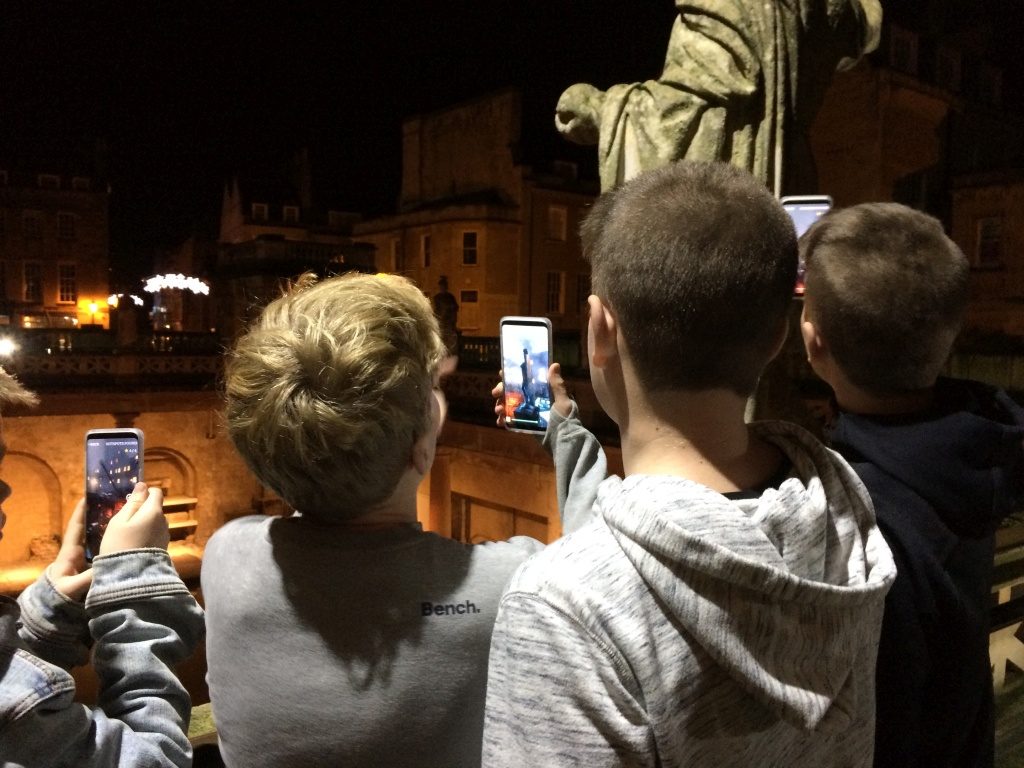Augmented reality in theatre & tourism: insights from Codex’s 5G and XR showcase
Blog -
Yesterday we attended the 5G and Extended Reality Showcase by Codex at Soho Hotel, London. The afternoon saw speakers from across industries, who talked about how 5G and Extended Reality have influenced their unique projects. They also reflected on what the future might look like for the adoption of augmented technologies, beyond advertising.
Two speakers in particular caught our attention with their unique uses of augmented reality (AR) to deliver awe-inspiring campaigns. What both of these had in common, which is in line with a wider trend in the AR world, is that their adoption of AR is not only intended to wow audiences, but also to provide more enriching experiences for visitors. Both campaigns also used technology to augment creative content, rather than simply delivering AR ads on social media.
The two speakers in question were Sarah Ellis, Director of Digital Development at the Royal Shakespeare Company (RSC) and Graham Thomas, Immersive & Interactive Content Lead at BBC Research & Development.
Bringing The Tempest to life through augmented technologies
Sarah Ellis talked about how they used augmented technologies in the RSC’s production of The Tempest. They were interested in how these technologies could inform the content of the theatre performance itself. With this production, they chose to have one of the characters portrayed by a “digital avatar”. The actor wore a motion capture suit that tracked his movements, and the resulting character was rendered live and projected onto a screen onstage, alongside the other actors.
To promote the production, they also produced a face filter on Snapchat.
When thinking about the future of augmented technologies, Sarah Ellis touched upon her interest in bringing meaningful theatre content to widely distributed platforms in the mobile devices we all carry around. A key challenge, but interesting opportunity, is to translate the ritual of going to the theatre to these platforms.
The RSC is also looking at other ways of bringing theatre to people remotely, such as through remote live performances. To date, this kind of experience is being delivered via cinema screenings, but she identified a unique opportunity to immerse audiences further by allowing them to access performances live directly from their mobile devices.
Educating visitors through augmented content

Graham Thomas showcased the BBC R&D’s work at the Roman Baths in Bath. The aim of the project was to educate and entertain visitors through augmented technologies.
The result was a mobile app that allowed visitors to see what the Roman Baths looked like at different times in history, such as in Roman times and during the renovations that took place in Victorian times.
As an example, the app allowed visitors to visualise the original roof, giving them a better sense of the scale and place of the Baths.
The BBC R&D team developed this project through a combination of technologies, including 3D modelling, 360° video, animated motions and interactive overlays showing information of what visitors were looking at.
Content delivery was trialed in two separate ways through 5G technology. Mainly, they used pre-rendered 360° video, which could be viewed from particular viewpoints, triggered by visitors pointing their phone to a marker.
However, a big part of the project was experimenting with remote rendering, which they achieved in collaboration with the University of Bristol. This involved using visitors’ location information to render every frame of video live and sending it back to their mobile device. This way, visitors were able to walk around and view video according to the exact position of their phone, rather than from a fixed place.
In talking about the future of AR, Sarah Ellis envisioned a future where augmented technologies are taken into account from the very start of every project, rather than as an afterthought. They really see AR progressing to a place where it is viewed as a truly utilitarian technology, rather than it being used simply for the “wow” factor.
Another big question was how AR may become more accessible to companies interested in these technologies. Both speakers expressed a desire to see AR moving to a place where it might become more scalable and templated.
What remained clear from this event was that augmented technologies are already having a huge impact on the theatre and tourism industries. Considering the speed with which augmented technologies are growing, we can expect to see many more impressive use cases like these in the near future.
To see some of the AR work we’ve produced in the theatre and tourism industries click here.


